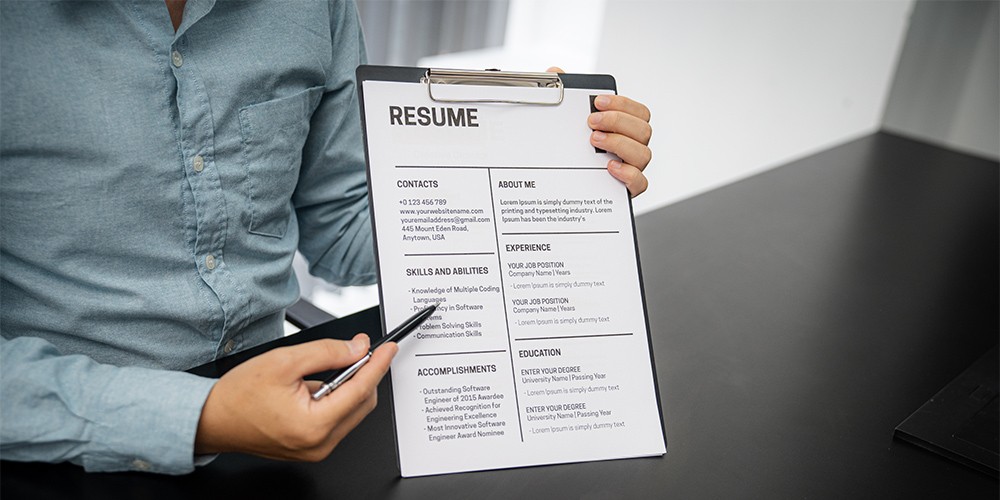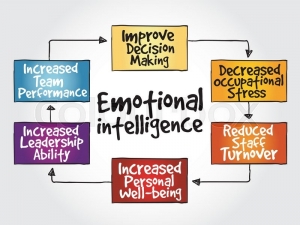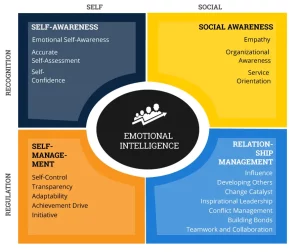
by admin | Mar 18, 2024 | Job, Employee Orientation, Employment Application, Interview Techniques, Job Analysis, Skills Gap Analysis
Title: Resume Essentials: What Every Job Seeker Needs to Know
Your resume is your personal marketing tool in the competitive job market. It’s the first glimpse potential employers have into your professional background, skills, and capabilities. Crafting a standout resume requires careful attention to detail and a strategic approach. Whether you’re a recent graduate entering the workforce or a seasoned professional looking for a career change, understanding the essentials of resume writing is crucial. Let’s explore what every job seeker needs to know to create a compelling resume that gets noticed.

1. Clear Formatting and Layout:
Your resume should have a clean and professional appearance. Use a simple, easy-to-read font and maintain consistent formatting throughout the document. Organize information logically, with clear headings and bullet points to make it easy for recruiters to scan.
2. Contact Information:
Ensure your contact information is prominently displayed at the top of your resume. Include your full name, phone number, email address, and LinkedIn profile (if applicable). Make it easy for recruiters to reach out to you for further consideration.
3. Strong Summary or Objective Statement:
Start your resume with a brief summary or objective statement that highlights your career goals and key qualifications. This section should grab the reader’s attention and provide a snapshot of your professional background and aspirations.
4. Relevant Work Experience:
List your work experience in reverse chronological order, starting with your most recent job. Include the company name, job title, dates of employment, and a brief description of your responsibilities and achievements for each role. Focus on relevant experiences that demonstrate your skills and accomplishments related to the job you’re applying for.
5. Education and Credentials:
Provide details of your educational background, including the name of the institution, degree earned, and graduation date. Mention any relevant certifications, licenses, or professional development courses that enhance your qualifications for the position.
6. Key Skills and Abilities:
Highlight your core skills and competencies that are relevant to the job. This may include technical skills, soft skills, languages, or specialized knowledge relevant to your field. Use keywords from the job description to ensure your resume gets noticed by applicant tracking systems (ATS).
7. Achievements and Accomplishments:
Quantify your achievements whenever possible to demonstrate the impact you’ve made in previous roles. Use specific metrics, such as percentages, dollar amounts, or project milestones, to illustrate your contributions and results.
8. Tailored to the Job Description:
Customize your resume for each job application by aligning your qualifications and experiences with the requirements of the job. Highlight the skills and experiences that are most relevant to the position to increase your chances of getting noticed by recruiters.
9. Proofread and Edit:
Before submitting your resume, carefully proofread it for spelling and grammatical errors. Ensure that all information is accurate and up-to-date. Consider asking a trusted friend, mentor, or professional contact to review your resume for feedback.
10. Keep it Concise:
Aim to keep your resume concise and focused on the most relevant information. Ideally, your resume should be no more than two pages long, with the most important details featured prominently on the first page.
By incorporating these essential elements into your resume, you can create a powerful document that effectively showcases your qualifications and experiences to potential employers. Remember to tailor your resume for each job application and continuously update it as your career progresses. With a well-crafted resume in hand, you’ll be better equipped to land interviews and advance your career goals.

by admin | Mar 18, 2024 | Job, Job Analysis, Skills Gap Analysis
Title: Unlocking Opportunities: Building a Winning Resume

In today’s competitive job market, your resume serves as your first impression to potential employers. It’s your ticket to unlocking opportunities and securing that dream job. But how do you ensure your resume stands out from the crowd? How do you build a winning resume that captures attention and highlights your unique skills and experiences? Let’s delve into the art of crafting a resume that opens doors to new career possibilities.
1. Know Your Audience:
Before you start crafting your resume, it’s essential to understand who will be reading it. Research the company and the role you’re applying for. Tailor your resume to align with the company’s values, culture, and job requirements. This targeted approach shows employers that you’ve taken the time to understand their needs and that you’re the right fit for the position.
2. Highlight Your Achievements:
Instead of simply listing your job responsibilities, focus on your accomplishments. Use quantifiable metrics and specific examples to demonstrate your impact in previous roles. Did you increase sales revenue? Streamline processes to improve efficiency? Lead successful projects? Highlighting your achievements not only showcases your skills but also provides concrete evidence of your value to potential employers.
3. Craft a Compelling Summary:
Your resume summary is your chance to make a strong first impression. Use this section to provide a brief overview of your professional background, skills, and career goals. Make it engaging and relevant to the job you’re applying for. A well-crafted summary can grab the reader’s attention and encourage them to keep reading.
4. Emphasize Relevant Skills:
Identify the key skills and qualifications required for the job, and make sure they’re prominently featured on your resume. Whether it’s technical skills, soft skills, or industry-specific knowledge, highlight the abilities that set you apart from other candidates. Use specific keywords related to the job to ensure your resume gets noticed by applicant tracking systems (ATS) used by many companies.
5. Keep It Concise and Clear:
Recruiters and hiring managers often have limited time to review each resume, so it’s essential to keep yours concise and easy to read. Stick to a clean, professional format with clear headings and bullet points. Use action verbs and concise language to convey your experiences effectively. Aim for a one-page resume whenever possible, focusing on the most relevant information.
6. Proofread and Edit:
Before sending out your resume, take the time to proofread it carefully. Check for spelling and grammar errors, formatting inconsistencies, and any other mistakes that could detract from your professional image. Consider asking a friend or mentor to review your resume as well, as fresh eyes can often catch things you might have missed.
7. Update Regularly:
Your resume is a dynamic document that should evolve as your career progresses. Make it a habit to update your resume regularly, adding new skills, experiences, and achievements as they occur. Even if you’re not actively job searching, keeping your resume up-to-date ensures you’re always prepared for new opportunities that may arise.
By following these tips and strategies, you can create a winning resume that opens doors to exciting career opportunities. Remember to customize your resume for each job application, highlighting the experiences and skills most relevant to the position. With a well-crafted resume in hand, you’ll be well-positioned to unlock new opportunities and take your career to the next level.

by admin | Mar 5, 2024 | Job, Job Analysis, Skills Gap Analysis
Achieving Job Balance: Navigating Work and Life in Harmony
In an era where the lines between work and personal life increasingly blur, achieving job balance has become more crucial than ever. This elusive equilibrium not only enhances productivity and career satisfaction but also improves mental health and personal relationships. This blog explores the concept of job balance, why it’s essential, and practical strategies to navigate work and life in harmony.
Understanding Job Balance
Job balance is not merely about dividing hours between work and personal life; it’s about achieving a state where both aspects complement rather than compete with each other. It’s the ability to fulfill your professional responsibilities while having enough time and energy for personal interests and family. Achieving this balance leads to reduced stress, increased job satisfaction, and overall better quality of life.
The Importance of Job Balance
The significance of job balance cannot be overstated. Constantly tipping the scales towards work can lead to burnout, stress, and health issues. Conversely, neglecting professional responsibilities can result in career stagnation or financial instability. A balanced approach ensures sustained productivity, fosters creativity, and maintains physical and emotional well-being.
Strategies for Achieving Job Balance
1. Set Clear Boundaries: Establish clear limits between work and personal time. This might mean turning off work emails after a certain hour or dedicating weekends solely to family and leisure activities. Clear boundaries prevent work from seeping into every aspect of your life.
2. Prioritize Tasks : Not all tasks are created equal. Identify what’s urgent and important, and allocate your time accordingly. Learning to prioritize effectively can significantly reduce work-related stress and free up time for personal pursuits.
3. Learn to Say No: Overcommitting is a common trap. Be realistic about what you can handle, and don’t be afraid to say no to additional responsibilities if they threaten your ability to maintain balance.
4. Embrace Flexibility: The traditional 9-to-5 model doesn’t fit everyone. If possible, negotiate flexible working hours or remote work options with your employer. Flexibility can be key to balancing work demands with personal needs.
5. Make Time for Yourself: Self-care is not selfish; it’s necessary. Ensure you carve out time for activities that rejuvenate your mind and body, whether it’s reading, exercising, or pursuing a hobby.
6. Leverage Technology Wisely: Technology can be a double-edged sword. Use productivity tools to streamline your work, but be mindful of technology’s tendency to encroach on personal time. Set app limits and designate tech-free zones in your home to disconnect and recharge.
7. Communicate Your Needs: Open communication with your employer about your need for balance is crucial. Many organizations are recognizing the importance of work-life balance and may offer solutions like flexible schedules, mental health days, or support programs.
8. Evaluate and Adjust Regularly: Achieving job balance is an ongoing process. Regularly assess your work-life balance and make adjustments as needed. Life changes, and so will your balancing act.
Conclusion
Achieving job balance is essential for sustaining professional success and personal happiness. It requires conscious effort, clear boundaries, and continuous adjustment. By implementing these strategies, you can navigate the demands of work and life in harmony, leading to a more fulfilling and balanced existence. Remember, balance is not a final destination but a journey that requires constant navigation and adjustment.

by admin | Mar 4, 2024 | Job Analysis

Emotional Intelligence in the Workplace: Boosting Team Performance and Leadership
Emotional Intelligence (EI) is not just a personal attribute; it’s a crucial skill that can significantly impact the dynamics and success of a workplace. In today’s fast-paced and interconnected world, the ability to understand and manage emotions, both in oneself and in others, is becoming increasingly important for effective leadership and team collaboration. In this blog post, we’ll explore how EI can transform leadership styles, improve team dynamics, and contribute to a more collaborative work environment.
Transforming Leadership Styles
Traditional models of leadership often prioritize technical skills and authority over emotional intelligence. However, research has shown that leaders with high EI are more adept at inspiring, motivating, and guiding their teams towards success. Here’s how EI can transform leadership styles:
Empathy and Understanding: EI enables leaders to empathize with their team members, understand their perspectives, and anticipate their needs. This fosters a culture of trust and respect, leading to increased employee engagement and loyalty.
Adaptability and Flexibility: Leaders with high EI are better equipped to adapt to changing circumstances and navigate complex interpersonal dynamics. They can adjust their leadership approach according to the needs and preferences of individual team members, leading to more effective communication and collaboration.
Conflict Resolution: Conflict is inevitable in any workplace, but leaders with strong EI can navigate conflicts more effectively by remaining calm, empathetic, and solution-oriented. Instead of escalating tensions, they seek common ground and facilitate constructive dialogue, ultimately strengthening team cohesion and morale.
Improving Team Dynamics
Teamwork is essential for achieving organizational goals, and emotional intelligence plays a key role in fostering positive and productive team dynamics. Here’s how EI can improve teamwork:
Communication and Collaboration:Teams with members who possess high EI communicate more effectively, listen actively, and express themselves clearly and respectfully. This leads to fewer misunderstandings, increased alignment towards common goals, and smoother collaboration.
Trust and Psychological Safety:When team members feel understood, respected, and supported, they are more likely to trust one another and feel psychologically safe expressing their ideas, concerns, and opinions. This creates an environment where innovation flourishes, as individuals feel empowered to take risks and think outside the box.
Shared Purpose and Motivation: Leaders with high EI inspire their teams by articulating a compelling vision, aligning individual goals with organizational objectives, and providing meaningful feedback and recognition. This creates a sense of purpose and motivation among team members, driving performance and results.
Fostering a Collaborative Work Environment
A collaborative work environment is characterized by open communication, mutual respect, and a shared commitment to achieving common goals. Emotional intelligence is the foundation upon which such an environment is built. Here’s how EI contributes to a more collaborative workplace:
Empathy and Inclusion:Employees with high EI are more empathetic towards their colleagues, appreciating their diverse perspectives, backgrounds, and experiences. This fosters a culture of inclusion where everyone feels valued and respected, leading to greater collaboration and innovation.
Effective Feedback and Conflict Resolution: In a collaborative workplace, feedback is given and received constructively, with a focus on growth and improvement rather than criticism. Similarly, conflicts are addressed openly and respectfully, with a shared commitment to finding mutually beneficial solutions.
Celebrating Successes Together:A collaborative work environment celebrates successes and milestones collectively, recognizing the contributions of every team member. This cultivates a sense of camaraderie and shared ownership, motivating individuals to continue working towards shared objectives.
In conclusion, emotional intelligence is not just a desirable trait; it’s a fundamental skill that can transform leadership styles, improve team dynamics, and contribute to a more collaborative work environment. By fostering empathy, communication, trust, and collaboration, organizations can harness the power of EI to drive performance, innovation, and success in today’s competitive business landscape. As leaders and team members alike continue to prioritize and develop their emotional intelligence, they pave the way for a more inclusive, resilient, and harmonious workplace culture.

by admin | Mar 4, 2024 | Skills Gap Analysis, Job Analysis
The Foundations of Emotional Intelligence: Understanding the Four Pillars
Emotional Intelligence (EI) is a powerful tool that can greatly enhance how we interact with the world around us. At its core, EI involves understanding and managing our own emotions, as well as recognizing and influencing the emotions of others. This skillset is built upon four foundational pillars: self-awareness, self-management, social awareness, and relationship management. Each pillar plays a critical role in developing a well-rounded, emotionally intelligent individual. Let’s delve deeper into these core components.
1. Self-Awareness
Self-awareness is the cornerstone of emotional intelligence. It involves having a deep understanding of your own emotions, strengths, weaknesses, values, and motives. People with high self-awareness are conscious of their feelings in the moment and understand how their emotions can affect their thoughts and behaviors. This awareness is crucial for personal growth, as it allows individuals to recognize which areas of their life need improvement and to navigate their emotions effectively.
Strategies to Enhance Self-Awareness:
– Keep a journal to reflect on your daily emotions and reactions.
– Seek feedback from trusted friends or colleagues to gain different perspectives on your behavior.
2. Self-Management
Self-management, or self-regulation, refers to the ability to control and appropriately direct our emotions. It’s about expressing our feelings in suitable ways, managing our impulses, and adapting to changing circumstances. High self-management means being able to stay calm and clear-headed under stress, and it enables individuals to make thoughtful decisions without being overly influenced by their emotions.
Tips for Better Self-Management:
– Practice stress-reduction techniques, such as mindfulness or deep-breathing exercises.
– Set clear goals and standards for your behavior, and monitor your progress.
3. Social Awareness
Social awareness involves understanding and empathizing with the emotions of others. It’s about recognizing social cues, understanding the dynamics in a room, and being able to put oneself in someone else’s shoes. This pillar is crucial for building strong, healthy relationships, as it helps us to interact with others respectfully and compassionately.
Ways to Improve Social Awareness:
– Practice active listening and give your full attention to others when they speak.
– Observe body language and social cues to better understand how others are feeling.
4. Relationship Management
The final pillar, relationship management, is about using our awareness of our own emotions and those of others to navigate interactions successfully. It involves clear communication, effective conflict resolution, and the ability to inspire and influence others. Mastery of this pillar enables individuals to build and maintain healthy relationships, both personally and professionally.
Techniques for Effective Relationship Management:
– Develop your communication skills, focusing on clarity, empathy, and active listening.
– Learn conflict resolution strategies that emphasize collaboration and understanding.
Conclusion
Emotional Intelligence is not an innate talent but a set of skills that can be developed over time. By focusing on these four pillars—self-awareness, self-management, social awareness, and relationship management—individuals can enhance their ability to understand and manage their emotions, relate better to others, and navigate the complexities of social interactions. Whether in personal life or in the workplace, a strong foundation in emotional intelligence can lead to more fulfilling and successful relationships and outcomes. As we continue to recognize the value of these emotional skills, we open ourselves up to growth, understanding, and a more connected way of living.

by admin | Dec 26, 2023 | Job, Interview Techniques, Job Analysis

“How to Ace Your Job Interview: Dos and Don’ts”
A job interview is a crucial step in the hiring process, and it’s essential to make a positive impression on your potential employer. Here are some dos and don’ts to help you ace your job interview:
Dos:
1. Research the company: Thoroughly research the company before your interview. Understand their mission, values, products, services, and recent news. This knowledge will demonstrate your interest and preparedness.
2. Dress appropriately: Dress professionally and appropriately for the interview. Choose attire that aligns with the company’s dress code or leans slightly more formal. It’s better to be slightly overdressed than underdressed.
3. Practice common interview questions: Prepare for common interview questions and practice your responses. Be ready to highlight your skills, experiences, and accomplishments. Practice in front of a mirror or with a friend to improve your confidence and delivery.
4. Showcase your enthusiasm: Show genuine enthusiasm and interest in the position and the company. Smile, maintain good eye contact, and engage with the interviewer. Express your excitement about the opportunity to contribute to the organization.
5. Prepare questions to ask: Prepare thoughtful questions to ask the interviewer about the role, company culture, and future opportunities. This demonstrates your engagement and interest in the position.
6. Provide specific examples: When answering questions, use specific examples from your past experiences to illustrate your skills and achievements. These examples help showcase your capabilities and make your responses more impactful.
Don’ts:
1. Don’t be late: Punctuality is crucial. Plan your route in advance, allowing extra time for unexpected delays. Arriving late can create a negative first impression and may be seen as a lack of respect for the interviewer’s time.
2. Don’t speak negatively about previous employers: Avoid speaking negatively about past employers, colleagues, or experiences. Maintain a positive and professional attitude throughout the interview.
3. Don’t oversell yourself: While it’s important to highlight your strengths, avoid exaggerating your skills or experiences. Be honest about your capabilities and focus on providing relevant and accurate information.
4. Don’t interrupt or dominate the conversation: Active listening is crucial during an interview. Allow the interviewer to finish their questions before responding. Be concise in your answers and avoid dominating the conversation.
5. Don’t forget to follow up: After the interview, send a personalized thank-you note or email to express your appreciation for the opportunity. This gesture demonstrates professionalism and reiterates your interest in the position.
6. Don’t neglect non-verbal cues: Pay attention to your non-verbal cues throughout the interview. Maintain good posture, use appropriate hand gestures, and maintain eye contact. Non-verbal communication plays a significant role in shaping the interviewer’s perception of you.
By following these dos and don’ts, you can increase your chances of acing your job interview. Preparation, professionalism, and a positive attitude will help you make a strong impression and stand out as a top candidate for the position.










